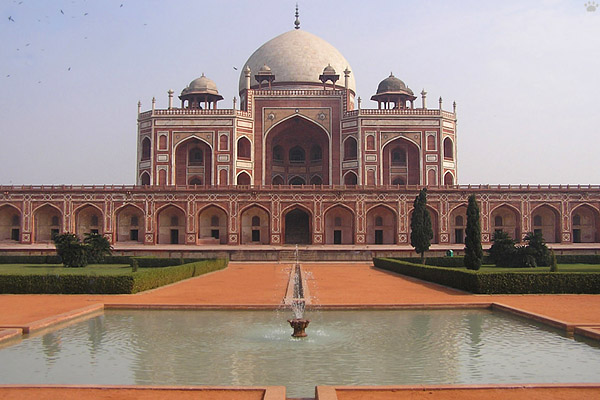
Humayun's Tomb, Delhi.
Part 4. The Mughal Empire
The Mughals were among many Muslim invaders to storm India from the Northwest. Their name is misspelled "Mongols": the founder of their empire, Babur, was a descendant of Genkhis Khan and Tamerlan. He invaded India in 1525. By the mid-18th century, the Mughal Empire was in deep decline, with various Muslim and Hindu forces gradually taking over its lands. But during the 200 years of their glory, the Mughals have created some of the world's most beautiful architecture. Some of it is in Lahore and other cities of Pakistan, but most is in and around the Indian state of Uttar Pradesh.
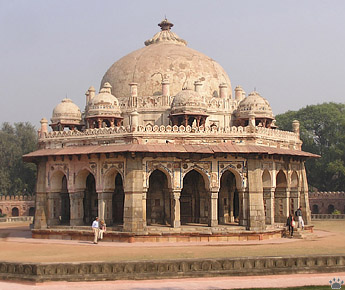
Isa Khan's Tomb (c. 1550), Delhi. |
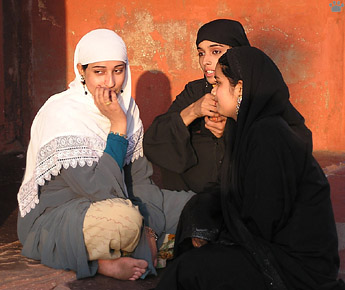
Muslim girls, Jama Masjid, Delhi. |
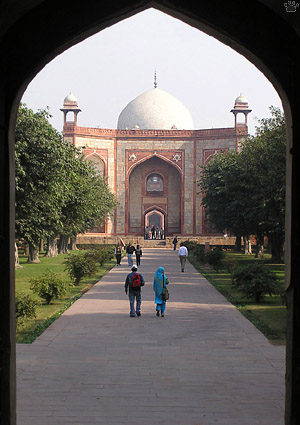
View through the first gate, Humayun's Tomb. |
Delhi has been the capital of the Mughals for a long time, and it has a lot of their monuments. The tomb of Humayun, Babur's son, who died in 1564, is one of the oldest Mughal buildings, and shows the beginning of local evolution of Persian style. |
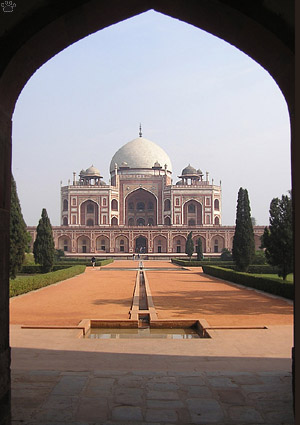
View through the second gate, Humayun's Tomb. |
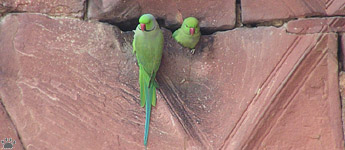 |
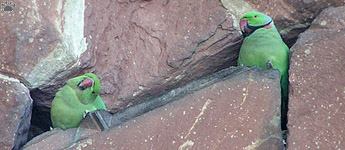 |
| Rose-ringed parakeets (Psittacula krameri), Humayun's Tomb, Delhi. |

Inside Nizamuddin Shrine, Delhi. |
Nearby is the tomb (c. 1562) and shrine of Nizamuddin Chisti (1236-1325), a Sufi saint, with a few later tombs nearby. A popular pilgrimage site, it makes you feel that Chistiya branch of Islam has turned into Golden Calf worship. |
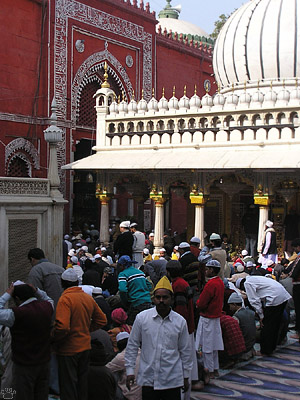
Inside Nizamuddin Shrine, Delhi. |

Inside Jama Masjid, Delhi. |
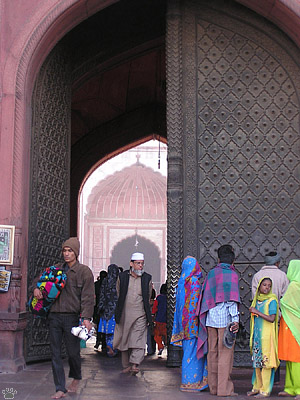
Entrance to Jama Masjid, Delhi. |
The largest mosque in India is Jama Masjid (originally Masjid-i- Jahanuma, "Mosque, commanding the view of the world"). Its courtyard has enough space for 25,000 people to worship, and its minarets are 40 m/135' high. |

Inside Jama Masjid, Delhi. |
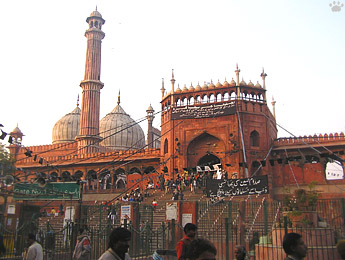 |
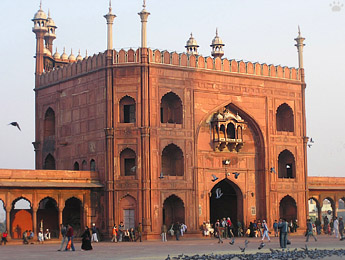 |
| Gates, Jama Masjid, Delhi. |
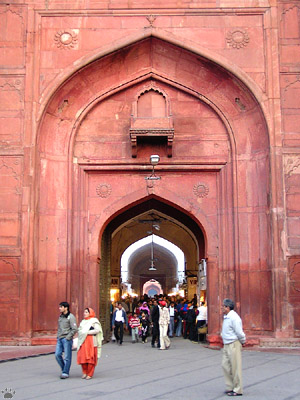
Gates of the Red Fort, Delhi. |
The Red Fort, or Lal Qila, is less interesting now than in Mughal times. Yamuna River no longer flows under its walls; stream that once ran through each building has dried up; metal plating and precious stones have been stripped off walls and domes. |
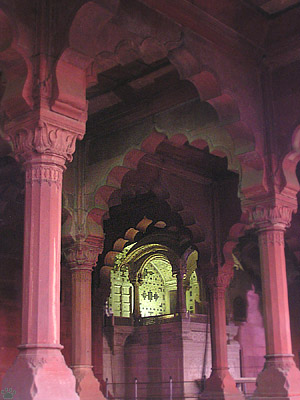
Moti Masjid, Red Fort. |
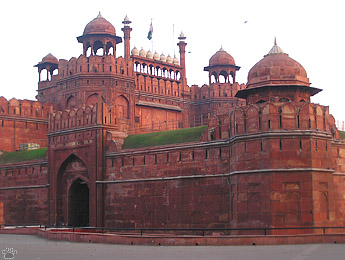 |
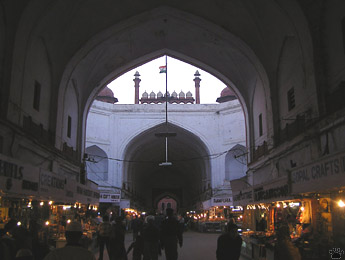 |
| Entrance to the Red Fort. |
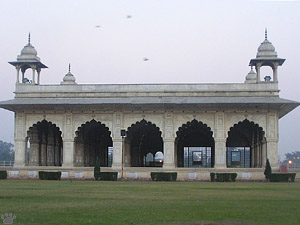
One of Divans (halls), Red Fort. |
But this huge 17th century fort is still worth a visit if you are in town. It has nice marble stonework and impressive gates. |

One of Divans (halls), Red Fort. |
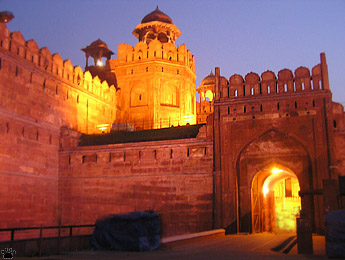 |
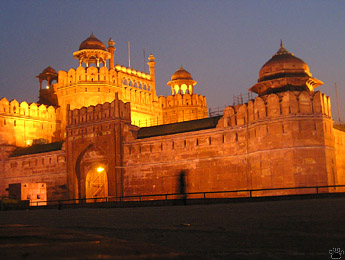 |
| Red Fort, Delhi. |
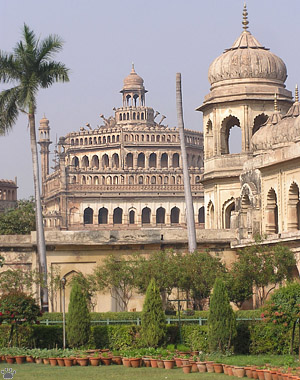
Bara Imambara (c. 1780), Lucknow. |
Lucknow became the capital of Muslim India at the end of the Mughal era. Its rulers, the Nawabs, built some beautiful monuments in 1750-1850, but these are all falling apart after decades of neglect by corrupt city officials. |
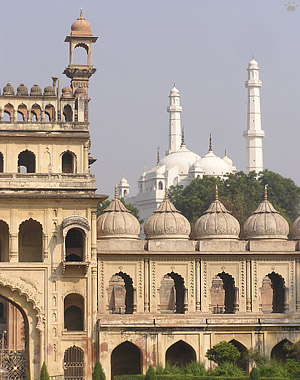
Bara Imambara and Aurangzeb's Mosque, Lucknow . |

Bara Imambara, Lucknow. |
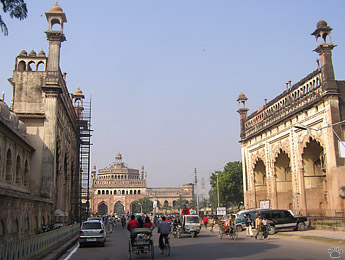
Rumi Darwaza, Lucknow. |
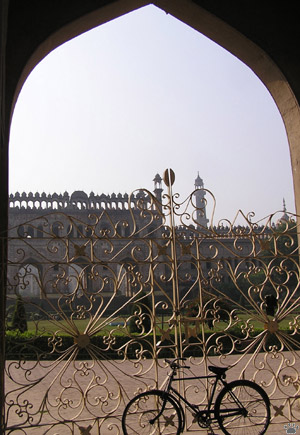
Gates, Lucknow |
Fatehpur Sikri, the Mughal capital during the reign of Akbar, was built in 1569-85, then abandoned for 350 years. Restored by the British in the early 20th century, it has a somewhat boring hilltop palace, and Jami Mosque with a splendid gateway. |

Gates of Jami Masjid, Fatehpur Sikri. |
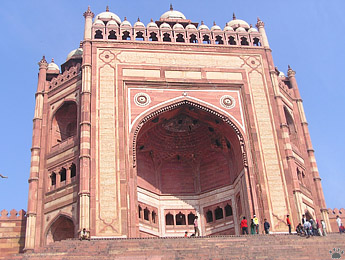
Staircase leading to the mosque, Fatehpur Sikri |

Inside the mosque, Fatehpur Sikri. |
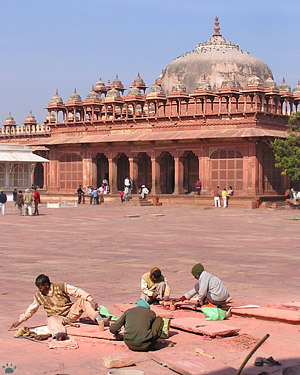
Masons at work, Fatehpur Sikri. |
Unless you are a barren woman visiting the tomb of Sufi saint Salim Chisti, this gate is the sole reason to stop at Fatehpur. The town exists only to help tourists part with their money; this can be done much more pleasantly in nearby Agra. |

Mosque gateway, Fatehpur Sikri. |
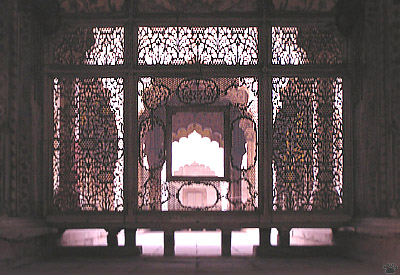
Window screen, Red Fort, Delhi.
|
Part 5: Agra
Back to Part 3
Home
|